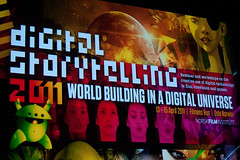Zuckerman's talk is very interesting for me as it calls for not only reflection on our role as global citizens, but action. I was disheartened when scrolling through the comments to see that a quite hostile discussion had been started about race. It is no secret that the U.S. was founded on racist principles, by white males in the possession of property. Racism and all forms of discrimination continue to oppress people living all over the globe. This being said, I feel that Zuckerman's intent is to expose the empty rhetoric of this digital era. Terms such as "democracy", "diversity", "multiculturalism", and "globalization" fill the media, especially regarding education. In theory, all of these ideals are based on equality; however, in practice they often elicit social injustice. Zuckerman proposes that the anticipated, utopian function of the internet as a "connector" has essentially been reversed. In other words, the internet is further solidifying boundaries, in turn perpetuating social misconceptions and inequalities. These thoughts raise a series of questions, of which I am not sure of the answers. Why do we function in such a limited manner on the internet? As the behavior is a global trend, is it a result of human nature and psychology or is it social ideologies, politics, economics etc? I wish I could answer these questions, but I think my time would be better spent identifying how Zuckerman's talk relates to education.
The most important point that I took from this talk is being an active member of the global world, creating and crossing 'bridges'. If we as teachers are just using the internet to meet a professional evaluation requirement or state standard, we are cheating our students from understanding the power that can come from using the internet. As Zuckerman warns, the internet has the potential to perpetuate social structures and hierarchies. Therefore, we must raise students' awareness of how they can connect in a meaningful way on a global scale; resources, such as ePals, may assist this effort. Even if we can just ignite a genuine interest among students to learn from/with people who are different from they are, they will be more prepared as global citizens. It is only natural that we will search for information and talk with people who align with our personal interests. However, we need to continuously encourage ourselves, our peers, and our students to leave our comfort zones and engage in new, thought-provoking conversation. Being a global citizen is not a passive role; it comes laden with responsibilities and challenges. But who ever said equality was going to be easy? All we can do is be aware and informed -- ever-teaching, ever-learning, and ever-sharing.







